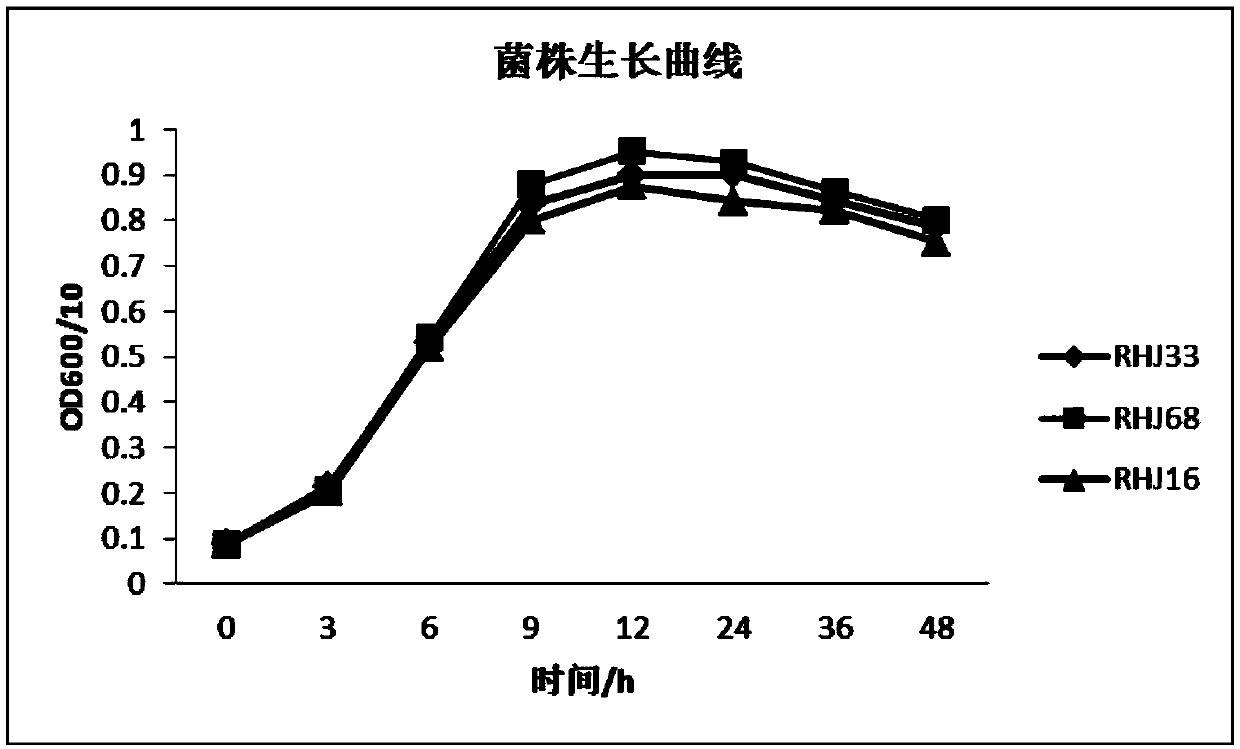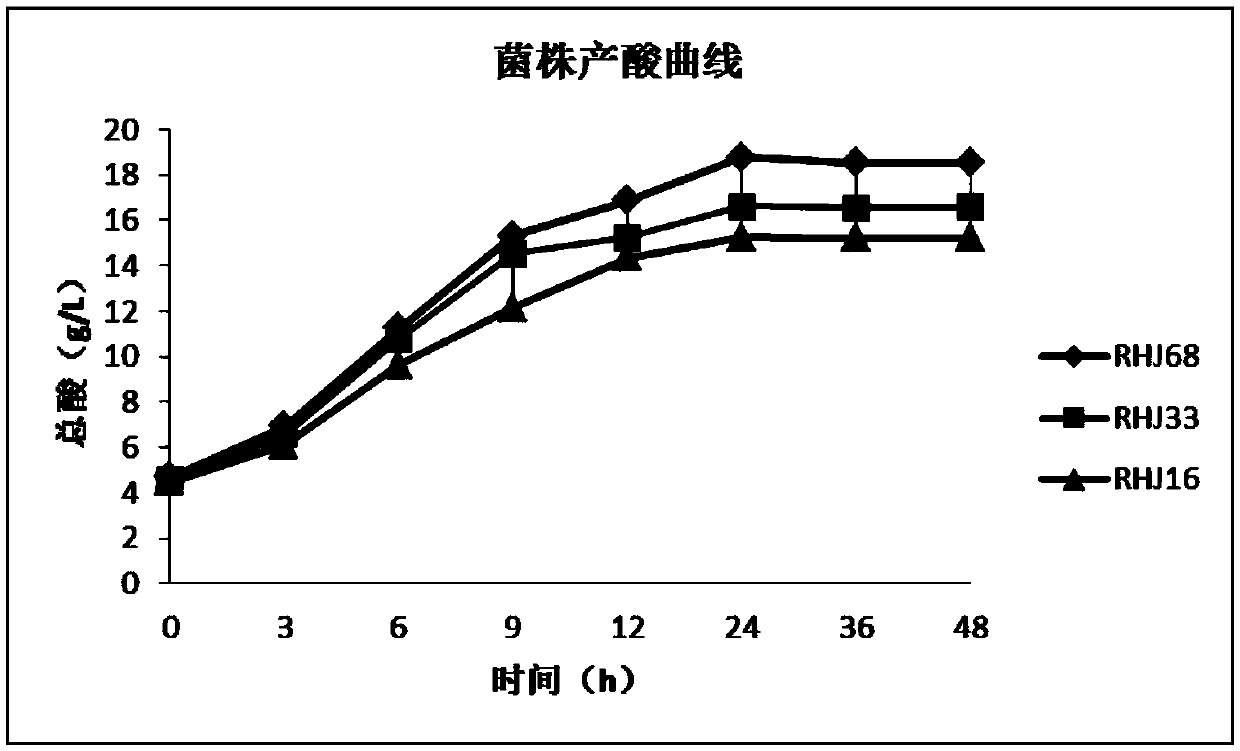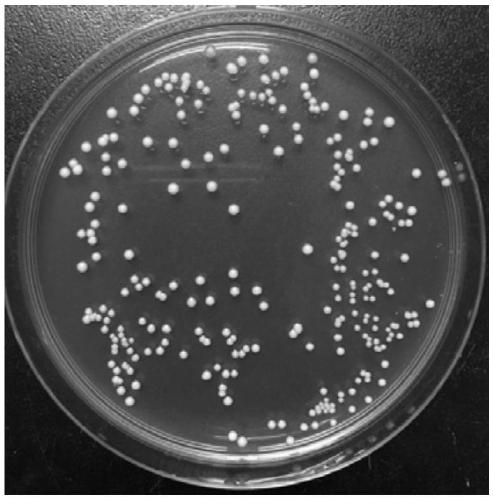Chinese rice wine low-ethanol beverage and preparation method thereof
A technology of low-alcohol beverages and sweet fermented rice, which is applied in the preparation of alcoholic beverages, biochemical equipment and methods, and methods based on microorganisms, can solve problems such as not being suitable for excessive drinking, avoid residual risks, realize clarification, and suppress impurities. The effect of bacterial growth
- Summary
- Abstract
- Description
- Claims
- Application Information
AI Technical Summary
Problems solved by technology
Method used
Image
Examples
Embodiment 1
[0034] Screening of lactic acid bacteria
[0035] 1. Isolation and purification of strains
[0036] Under sterile conditions, 100-fold, 1000-fold, and 10000-fold gradient dilutions were performed on the rice wine mash samples. Take 0.2mL of each of the three dilution gradient samples, spread them on the MRS plate medium containing 0.1% bromocresol green, and culture them in a sterile environment at 30°C for 2-3 days, pick the colonies that turn yellow on the plate around the strains, Multiple streak passages were performed on MRS plates until pure strains were obtained. After the isolated strains were tested by Gram staining, contact enzyme reaction, indole test and lactic acid acidification ability test, 78 strains of lactic acid bacteria were preliminarily screened out, numbered RHJ1-RHJ78.
[0037] Among them, the rice wine mash samples were from naturally fermented rice wine; the MRS medium was purchased from Huankai Microorganisms.
[0038] 2. Screening of acid-resista...
Embodiment 2
[0052] Effect of rice saccharification liquid on the proliferation of Pediococcus pentosaceae RHJ68
[0053] (1) Preparation of rice saccharification solution
[0054] The ratio of rice to water is 1:1, 1:1.2, 1:1.5, 1:2.0, 1:2.5, and the saccharifying agent is added at the rate of 70U α-amylase and 560U glucoamylase per g of rice, and stir evenly. Enzymolysis at 60°C for 2 hours, cooled, and set aside.
[0055] (2) Effect of rice saccharification liquid on the proliferation of RHJ68
[0056] The rice saccharification solution prepared in step (1) with different material-to-water ratios was sterilized at 121°C for 15 minutes, and the amount of bacteria inserted was 10 5 RHJ68 above cfu / mL was cultured at 30°C for 48 hours, and the colonies were counted. The MRS broth medium was used as the control group. Such as Image 6 As shown, the proliferation effect of the rice saccharification liquid prepared at the material-water ratio of 1:1.5 was equivalent to that of the MRS bro...
Embodiment 3
[0059] Effect of Lactic Acid Bacteria on Fermentation Flavor of Fermented Rice
[0060] Pediococcus pentosaceae RHJ68, Lactobacillus plantarum, and Lactobacillus casei were used as enhanced strains, commercially available sweet wine koji was used as the control group, and rice saccharification solution prepared with a material-to-water ratio of 1:1.5 was used as the lactic acid bacteria proliferation medium. Then add 1% to the cooked glutinous rice mixed with sweet wine koji, seal with double-layer gauze, and ferment and cultivate at 30±2°C for 2 days. The design scheme and results are shown in Table 2. As shown in Table 2, the acid production performance of the treatment group added with lactic acid bacteria was better than that of the control group CK during the fermentation period, and the acid production of treatment group 4, namely the addition of Pediococcus pentosaceae RHJ68, was the highest. Treatment 1, treatment 3 and treatment 4 can all get fermented fermented ferme...
PUM
| Property | Measurement | Unit |
|---|---|---|
| Bronsted acidity | aaaaa | aaaaa |
| Bronsted acidity | aaaaa | aaaaa |
| Bronsted acidity | aaaaa | aaaaa |
Abstract
Description
Claims
Application Information
 Login to View More
Login to View More - R&D
- Intellectual Property
- Life Sciences
- Materials
- Tech Scout
- Unparalleled Data Quality
- Higher Quality Content
- 60% Fewer Hallucinations
Browse by: Latest US Patents, China's latest patents, Technical Efficacy Thesaurus, Application Domain, Technology Topic, Popular Technical Reports.
© 2025 PatSnap. All rights reserved.Legal|Privacy policy|Modern Slavery Act Transparency Statement|Sitemap|About US| Contact US: help@patsnap.com



